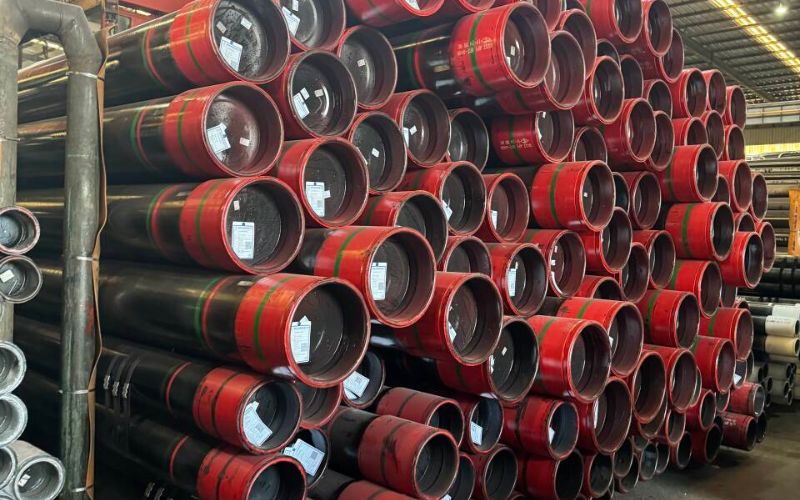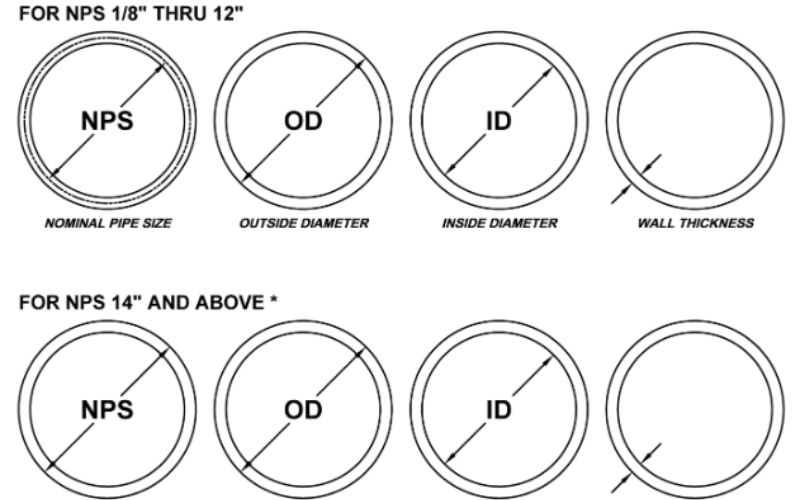Drilling through stainless steel requires specific tools that not everyone has. Many industries utilize stainless steel due to its resilience against rust and physical damage, however, its toughness increases the difficulty of drilling it out. Using the wrong drill bits may lead to inefficiency, broken tools, or destroyed workpieces. Luckily, this guide will make sure you know everything required to pick the correct drill bits for stainless steel. Be it a hobby or professional work, you will understand the most important attributes of performance bits, why the material and coating of the bits matter, and you will be walked through the top recommendations for your work. Getting stainless steel will no longer be an intimidating prospect.
What Are the Best Drill Bits for Stainless Steel?

Cobalt and carbide-tipped drill bits are the top performers when it comes to drilling stainless steel. The heat-resistance and toughness of cobalt drill bits which comes from their manufacturing process, a mix of cobalt and steel, is vital when dealing with challenging materials like stainless steel. Blends of steel and cobalt make cobalt drill bits incredibly durable. On the other hand, Carbide tipped drill bits are the best for industrial performance drilling due to their exceptional hardness and wear resistance.
Regardless of your use case, always choose a drill bit with a 135-degree split point tip, as this greatly reduces tip walking without a need for pilot holes. If the bit has been coated in titanium nitride (TiN) or other similar coatings, it is guaranteed to have increased durability as well as decreased friction during use. However, you must always work with the correct drill speeds and lubrication to protect the tool’s longevity and achieve accurate results.
Understanding Drill Bit Materials
Drill bits are created from three primary materials, which serve particular functions:
- High-Speed Steel (HSS): Cost-efficient and quite versatile, HSS is well-suited for drilling wooden, plastic, or soft metal pieces. Its resistance to heat and durability is an added advantage.
- Cobalt Steel Alloys: These bits are tougher as well as more heat resistant due to the cobalt infusion making these bits best suited for hard metal drilling, for instance, stainless steel.
- Carbide: Best for demanding industrial applications, carbide bits are extremely hard and heat resistant, which means they can drill through tough materials such as concrete and masonry. Although they are more brittle and demand careful handling.
Depending on the precision and endurance level needed, the order is tailored to the subject material to be drilled into.
Why Cobalt Drill Bits Are Recommended
Cobalt drill bits are praised for their unmatched performance and durability when precisely machining hard materials. These bits are able to withstand the high heat caused during the drilling process because of their unique composition consisting of steel alloy and 5-8% cobalt, making them ideal for extended periods of use without softening. This ability to combat extreme heat makes efficient drilling of hard metals like stainless steel, titanium, and cast iron possible.
Recent Cobalt drill bit data indicates that these drill bits stay sharp for longer when compared to HSS bits and require fewer frequent replacements. In addition to this, the wear resistance of cobalt also means that the bits have a much longer service life, which becomes advantageous when used in professional or industrial settings. For instance, industrial-grade cobalt bits outperform standard HSS bits by almost four times in high-temperature drilling environments.
The initial cost of cobalt drill bits may be slightly higher, but the extended life span alongside the ability to endure demanding tasks makes these drill bits a dependable option for professionals who require accuracy. Another noteworthy feature is the ability to re-sharpen the bits with no compromise to structural integrity, further adding value.
Comparing High-Speed Steel and Cobalt Options
High-speed steel (HSS) drill bits have extensive applicability. They can be used for general-purpose drilling in wood, soft metals, and plastic. HSS bits are made for high-speed cutting, can tolerate heat build-up during the drilling process, and withstand cutting at high RPMs. However, they might struggle with relatively softer materials like stainless steel or cast iron. Cobalt drill bits, which contain an alloy of steel with 5-8% cobalt, excel in abrasive tasks, thermal resistance, and hardness, making them ideal for rough, tough materials.
Cobalt drill bits generally outlast their HSS counterparts in order quite remarkably. For example, observed test subjects with cobalt bits reported retaining their edges longer than standard HSS models by 4-7 times when cutting hard metals. This increased efficiency means lower costs in the long term.
Regarding its performance, HSS drill bits are effective in low to moderate stress applications. Tougher than these, however, are cobalt bits, which can operate at higher temperatures without becoming brittle or losing their temper. With this, cobalt bits can drill faster, resist wear, and maintain operational efficacy during protracted or demanding industrial work.
Cost is another deciding factor for professionals in the field. Regarding price and availability, HSS drill bits are more cost-effective, while cobalt pieces are a more expensive option. On the other hand, HSS drill bits lose their value over time because cobalt bits have the advantage of being resharpened without losing structural integrity, making them more economical in the long term for high-demand applications.
As is clear, the demand of the project takes precedence in deciding between HSS and cobalt drill bits. For rare and general use, HSS bits are cost-efficient and dependable. For strong, durable, precision, and greater heat resistance needed in heavy-duty applications, cobalt drill bits outperform the rest. As a result, they become instrumental for professionals in the manufacturing, construction, or metalworking businesses.
How to Drill Stainless Steel Effectively?
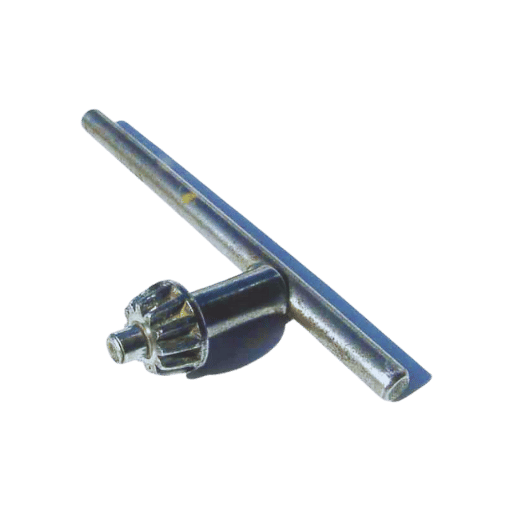
Choosing the Right Drill and Drill Bit
Stainless steel is a robust material, yet its difficulty in drilling arises from its hardness and ability to resist heat. To maintain its effectiveness and accuracy, tools must be selected properly.
1. Drill Type: Since drilling stainless steel requires a constant slow rate, a drill with changeable speed and strong torque needs to be used. The best tools for drilling stainless steel are corded drills and quality cordless electric drills that have speed control settings. The same goes for drill presses, but they must have adjustable feed rates for safer and more accurate drilling.
2. Drill Bit Material and Coating:
Cobalt Drill Bits (M35 or M42 Grade): Have 5 to 8 percent cobalt, which gives them exceptional heat and wear resistance. These bits excel for stainless steel drilling.
- Carbide Drill Bits: Ideal for demanding, precise professional work, but their fragility is a downside to their long-lasting sharpness.
- Black Oxide Coated Drill Bits: Superior against corrosion compared to uncoated, high-speed steel bits. Unprotected bits are more prone to friction, which leads to wear.
- Titanium Coated Bits: Enhanced durability against friction and heat. Once the bit is dulled, it cannot be sharpened without losing the protective coating.
3. Drill Bit Geometry: For improved accuracy and reduced walking when starting the hole, use drill bits with split point tips of approximately 135°. This geometry is especially important when penetrating hard materials such as stainless steel.
4. Cooling and Lubrication: Always use cutting oil or other specially formulated lubricants for metal drilling to lower friction, reduce heat, and increase the usable life of the drill bit. Most overheating occurs during operations and is one of the main causes of tool wear.
Appropriate drills and high-quality bits used with proper techniques lead to consistent performance, reduced tool damage, and minimized imperfections on the workpiece surface.
Optimal Drill Speed for Metal Drilling
The recommended drill speed while drilling metal depends on the metal in question and the size of the drill bit in use. Softer metals, for instance, necessitate higher speeds. For aluminum and smaller bits, the speed should be in the range of 2,000 to 3,000 RPM. On the other hand, harder metals such as stainless steel require slower speeds to avoid overheating, typically from 300 to 1,000 RPM, depending on the bit size. A commonly used rule of thumb is that smaller drill bits can run at high speeds while larger drill bits operate best at lower speeds. Always check the specific recommendations for drill speeds from the manufacturer and ensure sufficient cooling to safeguard the tool and material.
Techniques to Drill Through Stainless Steel Safely
My cobalt or carbide-tipped drill bit, which is designed for hard metals, allows me to cut through stainless steel without any problems. Slipping can occur, so I always mark the drilling point with a center punch beforehand. Additionally, I start at a low RPM and gradually increase the pressure until the bit starts moving, paying careful attention not to exceed the force threshold that would break the bit or damage the material. To decrease heat increase, I use cutting oil and fluid frequently throughout the process. To ensure smooth and riskless drilling, I regularly pause to let the drill bit and material cool, which prevents overheating.
What Types of Drill Bits Are Suitable for Metal?
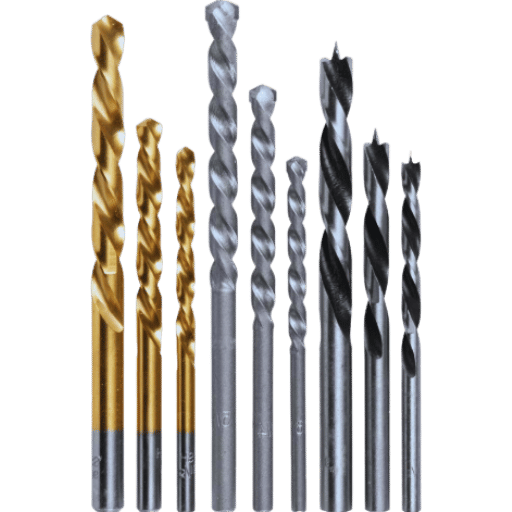
Exploring Twist Drill Bits and Their Uses
The type of drill bit that saw the most popularity is the twist drill bit as it is exceptional to use with metal, wood and plastic all at once. Twist drill bits are commonly made from high speed or cobalt steel with a titanium nitride coating. Their structure includes a spiral gap, “flute” which facilitates the removal of debris while drilling resulting in smooth functioning.
Concerning metalworking, cobalt twist bits are particularly useful because of their heat resistance, alongside the ability to penetrate difficult minerals such as stainless steel and cast iron. Research suggests cobalt drill bits can successfully endure high temperatures for prolonged periods. To achieve efficient precision, twist bits can be made in sizes ranging from 1/16 to ½ inch or larger, suiting operational needs.
The functionality of twist drill bits also relies on surface finish and coating. Coated with titanium, the drill bits can withstand four times longer than uncoated HSS bits of equal value, proving extremely useful for cost-effective filing. Moreover, modern manufacturers have begun to produce split-point self-centering designs, which further reduce wandering on hard surfaces. By carefully choosing the appropriate type of twist drill bit angle, professionals can achieve better accuracy, precision, and tool longevity.
The Role of Step Drill Bits in Metal Drilling
Step drill bits are exceptionally adaptable in engineering operations, especially in metal drilling, as they permit holes of several diameters to be drilled without needing to change bits. Their step design facilitates the creation of different hole sizes from a single bit, saving time in precision applications. High-speed steel (HSS) or cobalt, usually coated with titanium nitride, are the materials used in the manufacturing of step drill bits. This type of drill bit is designed to endure the heat and wear caused by repeatedly drilling tough materials like stainless steel, brass, or aluminum, which requires significant force.
Step drill bits sold in the market nowadays incorporate advanced technology in the manufacture of the flutes, ensuring the burrs are created at a minimum. Thus, step drill bits guarantee smooth performance during drills that do not require excessive deburring after the drill. They are widely used in applications dealing with thin-sheet metals because they do not warp and distort the materials. Research has shown that step drill bits, in comparison to traditional drills, are more efficient by 30% when dealing with drilling thinner materials. Such facts make these drill bits a popular option among electricians, metal fabricators, and HVAC contractors.
To improve an engineer’s tool life, efficiency, and overall productivity, manufacturers suggest the application of lubricants to control the heat and extend the lifespan during drilling operations. In addition, the modern innovations of step drill bits incorporate laser marking of size indicators, which enhances ease of use for applications like panel mounting or conduit hole drilling. With these refinements and recommended practices, step drill bits continue to be indispensable for contemporary metalworking.
Benefits of Using Solid Carbide Drill Bits
Because unclad carbide drills retain their sharpness even with vigorous operational stress and speed, unlike high-speed steel bits, which lose their cutting edge even under minimal single-use tasks, unclad drills are ideal for high-precision environments. Additionally, their unparalleled hardness, strength, and heat resistance, as well as their ability to sustain harsher running conditions, boost productivity while rigorously cutting steel, sometimes even crossing the five-fold speed benchmark compared to HSS drills, enabling precise unclad steel drilling. The rigidity of solid carbide assists in boosting accuracy when it comes to placing holes, an essential task in aerospace and automotive industries.
Solid unsuitable carbide drill bits are reported to possess wear resistance unrivaled by HSS drill bits, allowing users to spend less on maintenance services. Unlike HSS drills, which must be serviced more frequently due to lower durability, unclad drills tend to outlast their competition, giving them unparalleled value despite the higher initial investment. Another solid advantage of drill bits is their flexibility. Solid carbide drill bits can be used for drilling more difficult materials like stainless steel, titanium, and even cast iron, which traditional drill bits would have a difficult time with. Their extensive use in high-speed automated systems is a definite to their ability to endure extreme temperatures and still perform efficiently. With these characteristics, solid carbide drill bits become indispensable in modern machining operations that need precision, durability, and affordable costs.
How to Maintain and Sharpen Your Drill Bit Set?
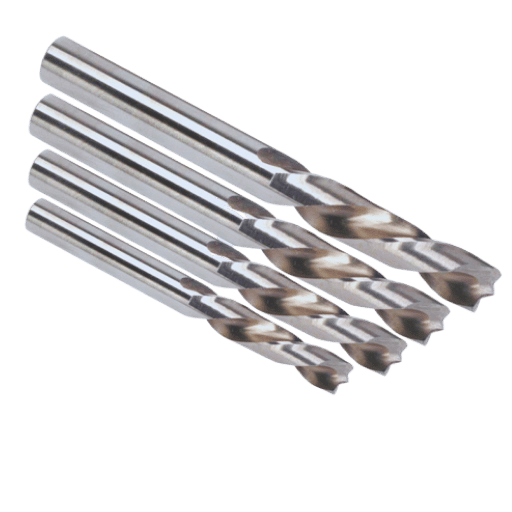
Best Practices for Drill Bit Maintenance
Optimal operational drill bits can be achieved through proper maintenance. This heightened care will also aid in extending performance longevity. Ensuring a rugged drill bit is performed right, below are some best practices to follow:
Regular Cleaning
Once a rig has been achieved, make sure to thoroughly clean the drill bits from debris, metal shavings, and dust. Wipe with a small brush or cloth. Rather, ensure there is not residue on the cutting edges since this would eventually lead to dullness.
Lubrication During Use
A high level of lubrication aids during friction. Although, this is mitigated with softer materials such as metal and concrete. Applying cutting oil or tailored lubricants wll not only aid the efficiency of the drill bit, but will also massively increase the products lifespan.
Inspect for Wear and Damage
It is advisable to examine the drill bits before every use to check for any signs of wear. These could include chipped edges or blunt tips. Drill bits that are damaged deal precision and excess stress on your devices. Repair damaged drill bits or replace if needed.
Sharpening Techniques
Maintaining sharp cutting edges and precision accuracy requires sharpening, especially for high-speed steel (HSS) bits. A sharpening tool or even a specialized bit grinder can be utilized, but the angle of the bit should be set correctly; for standard bits, this is usually within 118° to 135°. Because carbide bits are harder and more brittle, they may need professional sharpening with specialized tools.
Storage Solutions
Reduce the risk of damage with proper storage. Casing or holding drill bits can keep them organized, protect the cutting edges, and prevent corrosion. Placing them in a cool dry area also minimizes exposure to moisture and humidity.
Control Drill Speed and Pressure
Excessive pressure and fast drilling can quickly wear out drill bits. Follow the recommended speed and apply uniform, light pressure to maintain a consistent cutting action that avoids overheating.
Corrosion Prevention
Seal drill bits in a light machine oil coating when storing to reduce the risk of rust and corrosion, especially for carbon steel or HSS bits.
Adhering to the best practices above will allow you to improve the performance and life span of your drill bit set while also lowering operating costs through less frequent replacements. Routine maintenance boosts industry compliance and guarantees precision work in exacting applications with a competitive edge over the industry.
How to Sharpen Cobalt Drill Bits?
To reclaim cobalt drill bits as fully useful, follow these tips to retouch them:
- Using a Bench Grinder: Grab a bench grinder with a fine-grit wheel and securely fasten it. Check that the grinder is stable and working towards the recommended speed.
- The Drill Bit Must Be Held: The drill bit must be held up to the grinding wheel at a 60 degree inclination and aligned with the original angle of the drill tip, therefore, offset the drill bit to be at the original angle.
- Symmetrical Grinding: Both sides that were rotated with each cutting edge must have symmetrical rotation, evenly shared. Avoid excessive force.
- Perform Cool: Prevent overheating of the bit while dousing it with water and cutting oil.
Dipping at a set interval will enhance efficiency while prolonging the life of the bits by reducing the gap between cooling intervals, thus preserving their cutting efficiency.
Extending the Life of Steel Drill Bits
To increase the lifespan of steel drill bits, the following practices must be observed:
- Use The Appropriate Speed: Make sure to use the right RPM of the drill. This will help avoid excessive heat and erosion.
- Provide Lubrication: Apply lubricant such as cutting oil to friction surfaces to reduce overheating or increase its temperature.
- By no means Exert Excessive Pressure: Use controlled, lightweight pressure to avoid distorting the bit.
- Ensure The Sharpness: Dull bits must be sharpened at frequent intervals to guarantee cutting performance.
- Store Bits in an Orderly Manner: Moisture and physical damage may be sustained if bits are stored in an unorganized, damp, and unprotected environment.
Following all the practices mentioned above will ensure better performance as well as prolonged service life when it comes to steel drill bits.
Choosing the Right Drill Bit Set for Hardened and Stainless Steels
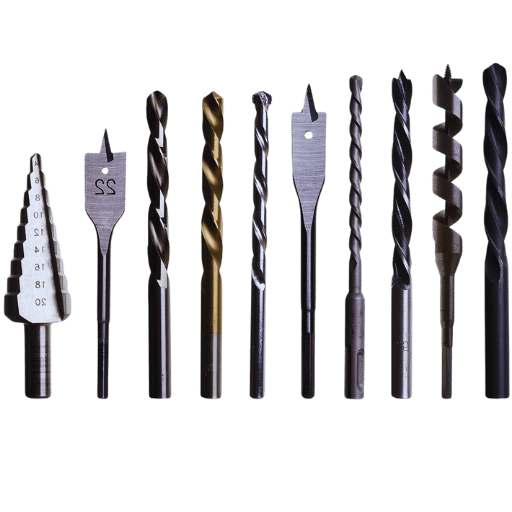
What to Look for in a Cobalt Drill Bit Set
Optimal performance and durability when machining hardened and stainless steels with a cobalt drill bit set are determined by the following factors:
- Material Composition: Cobalt drill bits should be made from M35 or M42 cobalt steel alloys. M35 includes 5% cobalt and M42 contains 8%. Both types offer excellent heat resistance and hardens, with M42 better suited for tougher materials.
- Coating and Finish: Go for uncoated bits or bits with gold oxide finish. Uncoated cobalt bits excel for low-friction, precision work, and gold oxide aids heat dissipation for high-speed cutting.
- Tip Design: Drill bits with a 135 split-point tip are best for hardened and stainless steel. This design prevents slipping, ensures clean entry, and uses lower drilling force.
- Durability and Heat Resistance: Cobalt drill bits are widely known to perform well under punishing temperatures. Check the manufacturer’s claims about heat resistance, particularly if the bits are meant to withstand extended use in harsh conditions.
- Shank Design: Round or hex shank enable use with myriad drill types. Enhanced grip features such as a reduced shank or tri-flat shank also boost operational stability.
- Size Range and Versatility: Make sure it comes with an extensive set of sizes to cater to different activities. Most sets offer sizes from 1/16 inch to 1/2 inch which are sufficient for many drilling operations.
- Durability Testing and Standards Certification: Complying with industry benchmarks like DIN 338 or ANSI for drill bits means such bits follow accepted standards, which is a good indication of their quality and durability.
- Manufacturer Warranty or Guarantee: Look for brands that provide warranties or satisfaction guarantees, since those are often associated with reputable manufacturers who stand behind their offerings.
A cobalt drill bit set specifically designed for hardened and stainless steels will substantially improve productivity and increase the life of tools during heavy use.
Evaluating Titanium Nitride Coated Options
Titanium Nitride (TiN) coated drill bits are well-known for their long-life application in woodwork-related technical functions. TiN is a ceramic material that is significantly bonded to standard drill bits, which increases the wear and heat resistance of the drill bits. The coating reduces friction at the drilling interface, which enables smoother bites and less wear on the worn edge of the drill bit. In addition, some studies suggest that TiN-coated bits can operate at 50% faster cutting speeds than uncoated pieces, while also extending the coated tool’s life two or three times.
Evaluating TiN-coated drill bits involves estimating their hardness rated, often mapped through the Vickers Hardness Test (HV). Typical values for Titanium Nitride coatings are on the order of 2,400 HV, meaning they are stronger than almost all high speed steel bits. Hence, these bits can effectively cut tough materials such as stainless steel, cast iron, and hardened alloys.
Moreover, the golden shade of TiN coatings has a practical regard as it indicates wear over time. Regions where the golden coating is lessened show locations that have seen heavy use, which assists operators in visually monitoring tool wear. Although the initial expense of TiN-coated bits is higher, the improved performance and longer life of bits usually lead to lower maintenance and replacement expenses, making them more economical in high-volume or precision machining operations.
Top Brands for Best Drill Bits for Stainless Steel
Choosing a reputable brand while picking drill bits for stainless steel is crucial for maintaining quality, durability, and efficiency. Below are some of the industry leaders that are well-known for their metal drilling innovations and reliability.
DEWALT
As with all other types of drills, DEWALT also offers premium cobalt drill bits and these have the added benefit of providing exceptional strength and heat resistance. DEWALT drill bits incorporate pilot point tips which helps reduce walking and guarantees clean, precision holes. Their cobalt alloy construction means that they can withstand the high temperatures encountered when drilling through stainless steel.
Bosh
Bosh defies the norm by specializing in advanced engineering. The high-speed drill bit contains an 8 percent cobalt alloy, which greatly increases its effectiveness for cutting hard materials, including steel.
Irwin Tools
Irwin cobalt high-speed steel drill bits are designed specifically for heavy-duty workloads. Their 135-degree split point is also designed to prevent spin drift that is commonplace when starting contact.
Would you like me to make any changes?
Makita
As a quality and innovative brand, Makita provides drill bits designed for industrial-grade applications. Makita’s Titanium Coated Drill Bits retain strength when subjected to thermal stress and reduce friction, prolonging drill bit life. These bits are very compatible for use with stainless steel, ensuring reliable performance for complex projects.
Milwaukee
Milwaukee Red Helix cobalt drill bits feature a variable helix design that clears chips efficiently and minimizes heat capture, making them suitable for extreme applications. Cobalt alloy has a 135-degree split point which ensures fast and accurate starts, while providing optimal performance on stainless steel.
Drill America
Professionals and DIYers have access to reasonably priced, high-quality cobalt drill bits from Drill America. Their DWDCO Series cobalt bits are distinguished by their durability, heat resistance, and a 135-degree split point, which makes walking impossible. These bits are perfect for high-precision drilling in stainless steel and other metals.
Popular Sizes and Applications
These leading brands offer multiple sizes of drill bits suitable for most tasks like making small pilot holes and drilling large holes. For optimal performance, users are recommended to use oil-based lubricants specially tailored for metal cutting in order to lower temperatures and improve performance. This will result in exact outcomes as well as long life for the tools used.
Purchasing drill bits designed for stainless steel from these names can offer considerable savings in time, decreased wear of the cutting tools, and a high level of operational effectiveness, all making these brands a smart investment for both professionals and hobbyists.
Frequently Asked Questions (FAQs)
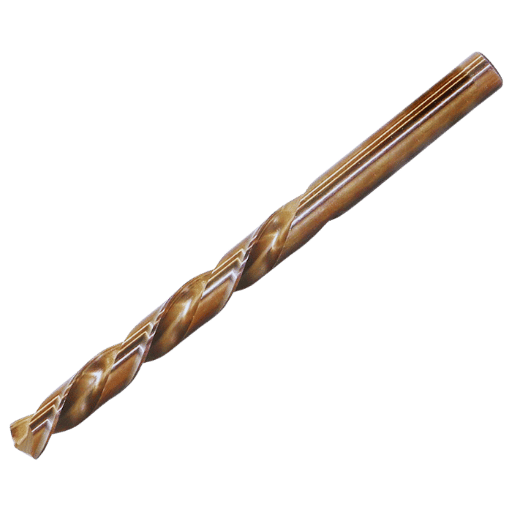
Q: Which type of drill bits are the most appropriate for metal, particularly stainless steel?
A: Cobalt bits are best for metals like stainless steel. These materials can penetrate hard metal and endure extreme heat.
Q: What makes cobalt bits an ideal choice for drilling stainless steel?
A: Cobalt bits have a higher percentage of cobalt, which fortifies its hardness and heat resistance. This makes cobalt bits better for drilling stainless steel, providing ease while cutting through the hard metal.
Q: Is it true that high-speed steel (HSS) drill bits are capable of drilling through hardened steel?
A: Yes, HSS drill bits can be used. However, cobalt twist drill bits may outperform HSS on hardened steel due to higher durability, heat resistance, and strength in tougher uses.
Q: What is the disadvantage of using step bits for metal?
A: Versatility and convenience for drilling sheet metal make step bits effective. However, they are also capable of drilling thin material with ease, which makes it a multi-purpose tool.
Q: What is the proper selection of drill bit size and type when drilling metal?
A: When selecting a drill bit for metal, calculate the thickness of the material and how large of a hole needs to be drilled. From there, reference a drill bit number chart for size requirements and choose a bit type like Cobalt or HSS based on how hard the metal is.
Q: What is an M35 cobalt alloy steel drill bit, and why is it suitable to use on stainless steel?
A: An M35 cobalt alloy steel drill bit is composed of 5% cobalt, which adds to the overall hardness of the drill bit, making it capable of cutting through extremely difficult materials such as stainless steel. Its durability and heat-resistant capabilities make it ideal for use on metals.
Q: Is there a specific drill bit for hardened metal, and in what way are they different from standard bits?
A: Yes, specific drill bits for hardened metals exist; for example, cobalt twist drill bits are made to handle the stress of being drilled into harder surfaces. They differ from standard bits in the way they are made and the materials used, with added heat treatment to improve their cutting efficacy.
Q: Should I use a drill press when working with steel drill bit sets?
A: Utilization within a drill press mitigates complications caused by issues like the operator’s hand that would otherwise be present. This is more beneficial as it improves precision with steel drill bits and A-frame structures.
Q: What should I consider when purchasing a bit set for hardened metal?
A: Take into consideration the material for the bit set, the size of the set itself, and the material’s possible combinations as attachments in hoods when aiming specifically at hardened metals.
Reference Sources
1. Dry Drilling 17-4 PH Stainless Steel With Solid Carbide Drill Bits. Performance Evaluation of Surface Quality Metrics: A Case Study
- Authors: Kamlesh Mandpe et al.
- Published on: 2020-01-27
- Overview: This research focuses on the impact of the type of solid carbide drill on 17-4 PH stainless steel hole quality, roughness, and chip size. The dry drilling was done at two different feeds (0.10 mm/rev and 0.15 mm/rev) while keeping the spindle at 2000 RPM. The overall findings reveal that surface finish and burr height remained the same, however, the shrinkage in hole size and delamination factor achieved with the coated solid carbide bit was significantly better than uncoated bit under all other processes.
- Approach: The work employs a case study approach in analyzing the surface finish and hole quality performance indices of various bit types within the confines of certain parameters (Mandpe et al., 2020, pp. 117–128).
2. Improvement of Deep Drilling of Stainless Steels using Nano-Lubricant via Twist Drill Bits
- Authors: T. Hoang et al.
- Published On: 2022-07-29
- Summary: In this work, we report a new approach for the preparation of lubricants by adding graphene nanosheets into a soluble emulsion to form a nanofluid used for deep drilling of AISI SUS 304 stainless steel. The results revealed that the nanofluid in comparison to emulsion lubricant brought down the drilling torque by 4.4 times and increased the tool life by as much as 20 times. The best cutting conditions were found to be a spindle speed of 550 RPM and a feed rate of 0.05 mm/rev.
- Methodology: The authors applied Taguchi L9 design of experiments for evaluating cutting parameter combinations along with the performance of nanofluid versus other lubricants (Hoang et al., 2022).
3. A New Approach to Comparing the Effectiveness of Drill Bit TiCN Coating versus No Coating in CNC Drilling of LDX 2205 Duplex Stainless Steel for Tool Wear Minimization
- Authors: Venkatasaikumar Chekuri, C. Thiagarajan
- Publication date: 2022-01-01
- Summary: This work aims to reduce tool wear, considering the operational efficiency of each drill bit type and comparing the TiCN-coated against the uncoated HSS drill bits for the CNC machining of LDX 2205 duplex stainless steel. It was found that the TiCN drill bit had less wear than the uncoated drill bit; the means were 0.7502 mm and 0.9324 mm, respectively.
- Methodology: The investigation consisted of laboratory studies where the cutting force, the depth of drilling, the speed of the spindle, and the feed rate were controlled. The data was processed using SPSS Software (Chekuri & C. Thiagarajan, 2022).
4. Drill bit
5. Steel



